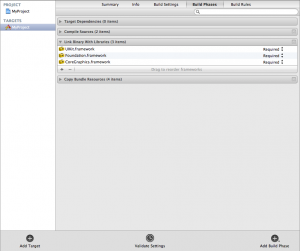
This amount of storage is a lot of you only store simple data like booleans, numbers or strings because they're small and very well-suited for key-value storage.

On tvOS, the user defaults store is even limited to a maximum 1MB of data and Apple recommends not exceeding 512KB. You can store a fairly large amount of data in user defaults but it’s not encouraged to store large blobs of data, images and other large data structures in user defaults. In my blog post on optimizing your app’s App Store reviews, user defaults are used to track several metrics like the number of launches, when the user first launched the app and more to figure out the best moment to show the user a review prompt. You typically use this storage for simple user preferences or to store simple values that help improve the user’s experience. Possibly the most well-known, easiest to use storage on iOS is the user defaults store. With that disclaimer out of the way, let’s start exploring storage options on iOS, shall we? Utilizing UserDefaults storage In general, you should at least consider any data that you store on a device accessible by attackers that have access to a physical device. I won’t cover how you can best encrypt data to increase security for any of the listed storage mechanisms. For this reason, I will only cover every storage mechanism in its “normal”, basic usage. Please note that I am not a security or encryption expert. In this post, you will learn about the following storage mechanisms: txt file, you’d typically write a script to parse that data and output an SQLite database, either directly (using the SQLite API) or as SQL commands that you can feed into the sqlite3 command-line tool.In this week’s blog post I will show you several storage options that are available to you as an iOS developer, and I'll explain the pros and cons of every storage method. If you get it in some serialised form, like a. If it’s something you hand craft, you could use an SQLite app to set it up. With regards B, the mechanism for creating the database kinda depends on the source of your input data: Packaging a ready-to-roll SQLite database in your app is a good way to do this. Your goal should be to minimise the amount of work you do at runtime on each client device, which means you want to push as much work as possible to build time. How the SQLite database should be embedded in your app? (A)Ĭan I just add an sqlite file to my package like you would with a plist, and then connect to it?Ībsolutely.
Reading and writing data in db sqlite ios how to#
This, btw, is another good reason to separate out this read/write data.Īpple Developer Relations, Developer Technical Support, Core OS/Hardware let myEmail = "eskimo" + "1" + you be able to provide a bit of guidance as to how to package a database with your app.

Then again, the same could be said of syncing between the users phone and iPad. If you want the user’s progress on their watch to be reflected on their phone, and vice versa, you’ll need a syncing strategy. The only wrinkle that watchOS brings to the table is the need for syncing. The techniques you use for this on iOS will work just fine on watchOS. There’s nothing special about a watchOS here. I haven't been able to find documentation on how to create an SQLite database within a Watch app. In this case, I’d recommend a second database with a HasSeen table that records the ID of every word that this user has seen. Without this, you might end up trying to back up your large read-only data set, which will run afoul of the iOS Data Storage Guidelines. When dealing with large databases, it’s important to separate the read-only stuff that’s part of your app (or downloadable content, but downloadable by all users) and the read/write stuff that’s specific to your current user. That data is static, but I will also want to store other user data that maps to these words such as whether the user has already seen this word. SQLite can handle this sort of thing, but it’s definitely a more advanced use case. You might want to create indexes over this table so that you can search the English column for “maker” and quickly find row 3, or search the German column for “back” and quicker find row 3.

For example, imagine a Word table like this: Storing this is SQLite probably makes sense, although it depends on how you access the data.

It’ll work, but you can only access a property list by loading the whole thing into memory, which is not a good option on memory-constrained platforms like the watch. Storing thousands of entries in a property list is generally not a great idea.


 0 kommentar(er)
0 kommentar(er)
